Introduction to Grinding Machine Fundamentals
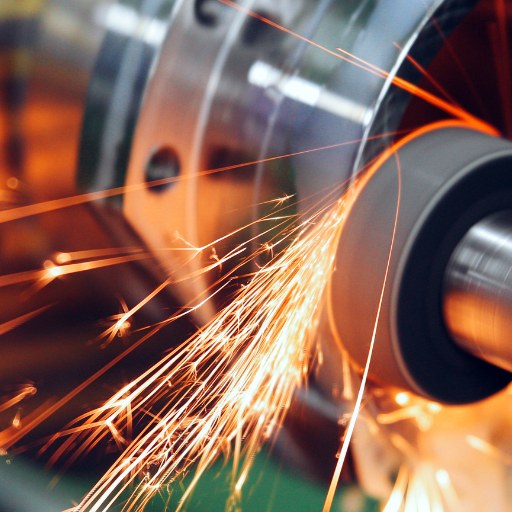
Many industrial processes are reliant upon grinding machines which help in achieving accuracy and efficiency. These are tools that remove material from a workpiece by means of a rotating abrasive wheel; this ensures smoothness while observing strict tolerances. There are different types of such machines, each designed for specific needs like surface grinders, cylindrical grinders or tool and cutter grinders among others. What sets them apart is their operational capabilities; some can handle heavy duty work while others are more suited for fine detail jobs.
In essence, grinding machines serve three main purposes; sharpening cutting tools, polishing surfaces and shaping hard materials such as metal into desired forms. The approach used depends on the task at hand hence plunge grinding may be applied where necessary together with through-feed or internal grinding techniques. Through these methods an operator can maximize the potential of his grinder leading to higher productivity levels and better quality output. As we delve deeper into this topic about grinding machines, there will be discoveries made concerning what they can do and where they apply most.
What is a grinding machine and its primary purpose?
Understanding the grinding process and how grinding machines remove material
Grinding is an activity that pulls out pieces from a material by the use of an abrasive wheel. The workpiece is in contact with the abrasive surface of this wheel, making it possible for chips to be removed in small quantities until high levels of accuracy and finishing are achieved. These are among the key points:
- Contact and Pressure: The abrasive grains on the wheel come into contact with the workpiece and put pressure on it to remove material.
- Abrasive Cutting Action:Every grain of the wheel is a small cutting tool that scrapes pieces away from the work object.
- Heat Generation:Friction generates heat as material is removed, usually controlled using a coolant to avoid thermal damage to the work object.
- Material Removal Mechanism: There are three main actions by which abrasive particles interact with workpiece materials; plowing, cutting, rubbing.
- Surface Finish and Precision: Grinding can achieve accurate dimensions and fine finishes necessary for high precision components.
Exploring Different Types of Grinding Machines

There are different kinds of grinding machines, each purposed for specific jobs or applications. The following are some of the primary types:
- Surface Grinders: These grinders are used when a smooth finish is needed on flat surfaces. They utilize usually a rotating abrasive wheel that works on both ferrous and non-ferrous metals.
- Cylindrical Grinders: Used to grind shoulders and cylindrical surfaces of workpieces, these machines can operate manually or under CNC control with varying material compatibility and precision requirements.
- Tool and Cutter Grinders: This kind of grinder is mainly employed for sharpening different types of cutting tools such as milling cutters, drills, and saw blades among others. It has flexibility in terms of tool creation and maintenance.
- Centerless Grinders: Unlike other grinders, centerless ones don’t need the workpiece to be held mechanically at the center; instead, it uses rotational abrasives to achieve accuracy over long slender workpieces like rods or bars.
- Internal Grinders: Designed specifically for grinding inside diameter (ID), these machines provide high levels of accuracy in components like bushings or bearings.
- Specialized Grinders: In this category there exist various other types which cater for specific applications i.e., gear grinding machine, thread grinding machine, profile grinder etcetera; each having its own unique features suitable for their respective tasks .
Every type of grinding machine has its set of benefits that make them necessary across different industries including but not limited to manufacturing industry where they are used heavily during fabrication processes; also automotive sector needs this equipment greatly because without it no proper finishing can be achieved especially when dealing with engine parts either new or old so too aerospace industry cannot do without such technology since every part produced must meet certain dimensional accuracy before being assembled into larger structures.
The versatility of cylindrical grinders
How surface grinders enhance precision
Surface grinders are important machines in the field of machining and manufacturing because they enable high precision. So as to achieve a flat surface, these machines apply a rotating abrasive wheel that removes material. Several factors contribute to this accuracy:
- Consistency and Accuracy: Consistency in material removal and smooth finishes provided by surface grinders are necessary for applications requiring high levels of accuracy. The grinding wheel and workpiece move under control thus minimizing any deviation from flatness or surface roughness.
- Sophisticated Technology:Digital controls and CNC (Computer Numerical Control) systems on modern surface grinders can be used to program grinding operations very accurately. This eliminates mistakes made by humans during production hence ensuring repeatability and high precision.
- Fine Material Removal: Surface grinders have the ability to take off very small amounts of materials with each pass hence can allow for tight tolerances adjustment towards final dimensions together with finish quality control.
- Various Applications: Grinding may be done on different materials including composites, metals or ceramics among others since these machines are adaptable. Each material has its specific needs which are catered for by using appropriate types of grinding wheels as well techniques thereby retaining accuracy.
- Additional Features: Advanced clamping mechanisms; coolant system for heat reduction; systems that absorb vibrations among others have been incorporated into most recent models of surface grinders. Such features help in improving workpiece integrity besides enhancing grinding process accuracy levels.
By incorporating advanced technology into their design while paying more attention towards finer material removals; these devices greatly increase the level of preciseness achieved during component production meant for various sectors.
Benefits of bench grinders and tool and cutter grinders in workshops
- Versatility: For a number of grinding jobs, such as tool sharpening, metal shaping and paint or rust removal among others, bench grinders and tool and cutter grinders are necessary. This implies that they cannot be done without in workshops where equipment is kept in good condition.
- Efficiency: These grinders save time as well as making accurate work possible on different tools made from different materials. They also extend the life of a tool by keeping its edges sharp and surfaces smooth hence increasing productivity within the entire workshop.
- Precision: Precision tasks have been taken into consideration while designing this type of a grinder especially for tools. It enables one to do proper sharpening or shaping of cutting instruments so that they may perform at their best thereby meeting all concerns about detailed work requirements.
- Cost-Effectiveness: The cost saving aspect comes in when you invest in these types of grinders because it helps minimize frequent replacement needs for various equipments. A properly sharpened tool lasts longer than one which has not been sharpened at all besides doing better work thus reducing expenses incurred through buying new tools every now and then.
- Safety: Safe tools are those which have been well taken care of too. Bench grinders together with other related types ensure machines are kept under optimum conditions thereby reducing cases associated with accidents caused by blunted or spoiled devices.
Bench grinders and tool & cutter grinders provide versatility; enhance efficiency; promote precision; offer cost effectiveness; improve safety – these aspects make them essential investments for any workshop setting.
Choosing a Grinding Machine for Your Needs
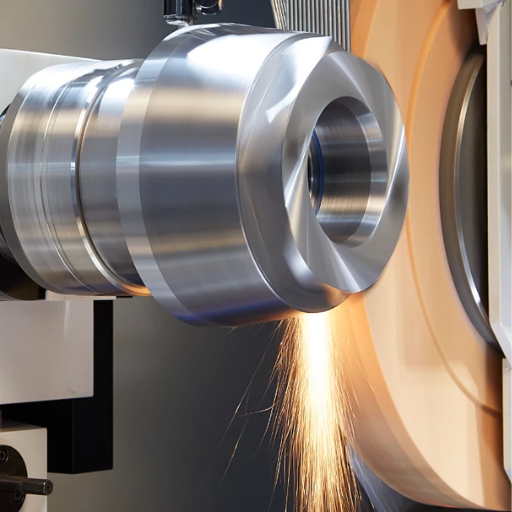
When choosing a mill for your shop, you need to understand what jobs it has to do. Identify what materials and tools will be used, this will help establish the capacity and compatibility of the grinder. For general purposes such as sharpening or shaping, bench grinders are suitable; whilst tool and cutter grinders are designed for more accurate cutting tool maintenance.
Motor power is also important; adjustability speeds things up by making them more versatile as well as efficient – look into this too! Another thing that people often forget when purchasing any machine is how long it will last them in terms of quality; robustness should not be ignored here either especially if one plans on using their new toy every day.
Safety features are vital too: adjustable guards can go some way towards achieving peace mind while comfortable handles ensure that nobody ends up straining themselves during use. An ergonomic machine is also something worth considering because if a process takes 3 hours instead of 2 due solely down lack user friendliness then all those extra minutes will soon start adding together.
Grinder wheel size/type selection: different wheels have been designed with specific applications in mind – some remove rust easily while others are better suited for fine tuning edges etceter. This factor alone could completely change what type/grit one chooses so don’t overlook its importance either!
Finally ease maintenance/replacement part availability may save time later on down line. A grinder which requires minimal upkeep but boasts parts which can be swapped out quickly could end up being cheaper over many years than another model where this isn’t case Evaluating these factors should help you choose the right grinding machine for your workshop to ensure efficient safe operation with precision
Factors to consider when selecting a grinding machine
- Grinder Type: Pick the correct one according to your requirement- general operations require bench grinders, while for surface grinding choose a precision grinder and cylindrical grinders are good for making detailed shapes.
- Motor Power: Stronger motors can cut through tougher materials and handle larger tasks; it is good if the speeds can be adjusted to suit different needs.
- Build Quality: Look out for machines that are made from strong materials and have safety features like adjustable guards and comfortable handles that do not slip.
- Wheel Size and Type: There are many types of wheels available such as abrasive wheels which are used in heavy duty grinding or finishing wheels used for light touch ups.
- Ergonomics: Machines which have been designed with ergonomics in mind will reduce fatigue among users thus increasing productivity levels achieved.
- Safety Features: Ensure that all necessary precautions have been taken into account during production including overload protection systems as well emergency stop buttons should anything go wrong along the line of operation.
- Serviceability:Go for those units which require minimum maintenance practices since they usually come with easily replaceable parts hence more cost-effective measures adopted over time compared to others having complex designs demanding specialized skills during troubleshooting exercises.
- Brand Reputation And Customer Reviews:Search around different brands before settling on any particular one also consider what other people say about them especially customers who had purchased similar products previously so as get an idea how reliable these machines could be long term user satisfaction rates too need evaluated partcularly associated with this type of equipment commonly referred to as grinders .
- Budget Allocation: You should weigh the feature set against durability vis-a-vis its price tag because sometimes being willing spend little extra money now can save much more later down road when repairs become frequent due poor quality components used during manufacture or design flaws identified after some time has elapsed post purchase completion date applicable here towards investments revolving around this device generally denoted by word grinder .
- Availability Of Spare Parts: Also check whether there exists an adequate supply chain management system place ensuring timely delivery such items whenever they are needed so that there is no extended down time caused by lack these components otherwise referred here as parts associated with grinders
Comparing different types of grinding machines for specific tasks
When contrasting different kinds of grinding machines for certain jobs, one must consider what they are and how they work because this can affect the outcome. Here’s a list:
- Bench Grinders: They’re great for general tasks like sharpening tools or shaping metal but they also have other uses too such as removing rust or even DIY projects around the house etc.
- Surface Grinders: This type is used when you need to get an extremely smooth flat finish on a metal surface. Used in preparing flat surfaces before machining operations where high accuracy is required etc.
- Cylindrical Grinders: These ones are best for producing detailed shapes with external or internal grinding so as to create cylindrical parts; especially useful in aerospace industry among others.
- Tool and Cutter Grinders: They are mainly used in sharpening milling cutters but also reamers, etc. These types can offer precision which is essential when it comes to maintaining tool accuracy and extending tool life span etc.
- Centerless Grinders: The main advantage of using these types over others is that you don’t need centers to hold the work piece while machining cylindrical parts which require high level of precision during production runs characterized by large volumes etc.
- Belt Grinders: This category does most jobs quickly due its ability grind large surfaces at once thus making them popular choice for deburring in metal fabrication shops among others.
- Die Grinders: Typically used for sanding, polishing or detailed grinding in tight areas where space may be limited; being handheld gives this kind flexibility so as to work on hard reach parts too.
- Angle Grinders: Are versatile hand held cutting, grinding and polishing tools for various materials like metal tile wood; highly portable hence widely employed construction sites as well homes during DIY projects etc.
- Pedestal Grinders: Similarities between bench grinders mounted on a pedestal mean that these machines can handle heavy duty tasks usually performed industrial setting that requires more power stability than what typical bench grinder offers etc.
- Rotary Grinders: Unique thing about these machines is that they use circular grinding discs which rotate thus providing surface finishing results suitable for both ferrous and non-ferrous metals alike.
By understanding the specific capabilities and ideal applications of each type, you can select the right grinding machine for your particular needs, ensuring efficiency and precision in your work.
Why the precision of cylindrical grinding machines matters
Grinding Wheels and Their Importance
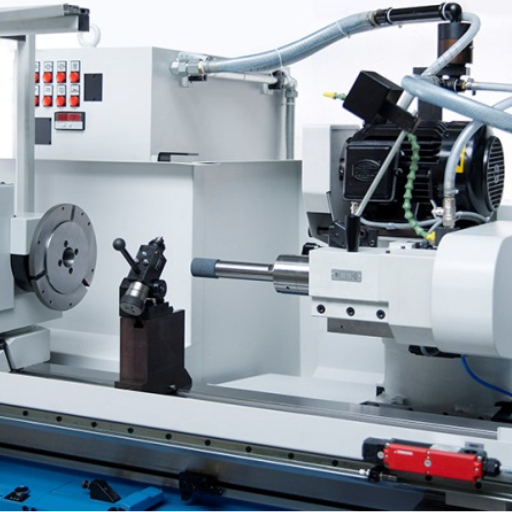
The process of grinding is very important and a key part is played by the grinding wheel, which is an abrasive tool for shaping or finishing metals and other materials. These wheels are made up of bonded abrasive grains that allow for efficient cutting as well as accurate surface finishing. They have multiple benefits including:
- Precision and Accuracy: Grinding wheels with high quality enable industries such as aerospace, medical devices manufacturing and automotive to maintain tight tolerances and exact dimensions.
- Surface Finish: Components perform better when they have been treated with superior surface finishes achieved through the use of grinding wheels.
- Material Versatility: Grinding wheels can be used on different materials like steel, alloys, ceramics and composites thus making them necessary in various industrial applications.
- Efficiency and Cost-Effectiveness: Grinding wheels provide consistent results that can be repeated thereby reducing material wastage during production which leads to overall efficiency improvements in manufacturing processes hence saving costs significantly.
- Extended Tool Life: By choosing appropriate grinding wheel types together with their correct usage practices; tools’ lives may be prolonged alongside those of workpieces while keeping performance at par over time.
A person needs knowledge about properties specific to different kinds of these tools so as to select rightly during application thus optimize outcome expectations from grinding while achieving the desired results.
Role of grinding wheels in machining
Grinding wheels are crucial in the machining industry because they can make things very exact and shiny. In fact, one might say that grinding wheels are so important to the industry that they’re used for everything from sharpening to cutting and polishing. Some of their key roles include:
- Material Removal: Grinding wheels take material off of a workpiece so it can be whatever shape or size is desired.
- Improved Surface Quality: The smooth finishes created by grinding wheels make workpieces more pleasing to look at as well as more functional.
- Versatile Applications: These tools can be applied on hard metals or even softer materials such as plastics and rubber alike.
- Speed Up Production: With faster material removal and improved throughput, grinding wheels are able to increase production speeds.
- Consistency and Repeatability: When making many things at once, it is important that each product be exactly the same; this cannot happen without uniform performance from the grinder wheel which also leads dimensional accuracy across multiple pieces being produced therefore required for mass production.
- Tool-Life Extension: A good machinist knows how valuable his tools are – he would do anything just so they last longer! Well, guess what? You’re in luck because if you use them right these babies will outlive both themselves AND your workpieces by preventing excessive wear & tear through proper usage.
- Reduction in Machining Errors: Precision ground parts have fewer errors which mean less rework too thus contributing towards higher quality items during manufacturing process all thanks due to precise grinding.
- Complex Shape Flexibility: No other tool allows for intricate shapes than a grinding wheel does.
- Safety: Nobody wants accidents happening around here especially when there’s machines involved but luckily enough with high quality grinders such risks get reduced considerably ensuring safer working conditions overall .
- Eco-Friendliness: Advanced grinding wheels are designed to minimize waste and reduce energy consumption, making them a more sustainable option.
In conclusion, grinding wheels are indispensable in machining for their precision, versatility, and efficiency, contributing significantly to the quality and cost-effectiveness of manufacturing processes.
How to select the right grinding wheel for your machine
To make sure that both your machine and the wheel serve you well enough, it is necessary to consider a number of factors when choosing a grinding wheel. Here are the main ones:
- Material identification: Establish what material the workpiece is made of. Normally, harder materials such as metals require abrasive like aluminium oxide or silicon carbide while softer stuff like rubber and plastics may need different abrasives.
- Wheel shape determination: Think about which shape of the wheel will be appropriate for this particular grinding task. Straight wheels, cylinder wheels and dish wheels are some common forms used in different applications.
- Grit size checking: The roughness of finish is determined by grit sizes; lower numbers represent coarser grains used for removing more materials while higher ones indicate finer grains meant for precision works or finishing touches.
- Bond type selection: Different types bonds are used in making a grinding wheel depending on its expected use. Resin bonds offer flexibility and shock resistance while vitrified bond give hard structure required for delicate operations.
- Consider Wheel Hardness: Hardness affects how fast a wheel wears down; hence its ability to maintain sharpness should be put into consideration too. For instance softer wheels are good with hard materials since they prevent overheating whereas harder ones are preferred when working on soft objects so that they can remain sharp throughout.
- Match the Wheel Speed: Ensure that the rated speed of your grinder matches with that indicated on the wheel to avoid accidents and achieve desired output.
- Evaluate the Wheel’s Diameter and Thickness: These dimensions must be compatible with those provided by manufacturer’s instructions concerning your particular model number otherwise this may lead to imbalanced conditions during operation thus compromising safety standards.
- Look at Manufacturer Recommendations: Always follow what both machine maker’s guide book states alongside relevant details given by equipment producer about right selection methods basing on their application specification requirement levels such as maximum allowable speeds etc.
Take time considering these points because through them you will end up saving energy, being safe and coming up with better working surfaces while doing your machining activities.
Differences between abrasive materials and their applications
Picking the right abrasive material for your needs requires understanding the distinctions between them. These are a few examples of commonly used abrasive materials:
- Aluminum Oxide: A versatile abrasive that is widely used for grinding ferrous metals like steel and iron. Durable enough for most machining operations.
- Silicon Carbide: Known for its sharpness, silicon carbide works well on non-ferrous metals such as aluminum, brass, and bronze. Also used for grinding glass, ceramics, and other non-metallic materials.
- Ceramic Alumina: Designed as a high-performance grinding abrasive; very hard and long-lasting. Used to grind hard alloys or stainless steel among other challenging tasks.
- Garnet:Softer than either aluminum oxide or silicon carbide abrasives, garnet is often used in wood working applications or other situations where an easily scratched surface could be damaged by harder substances being ground against it during preparation prior to painting etcetera.
- Diamond: Diamond is one of the hardest substances known to man and so it can be used with great effect when precision is required during grinding operations involving very hard materials such as carbides (eg tungsten), glass or ceramics etcetera.
- Cubic Boron Nitride (CBN): Almost as hard as diamond but not quite there yet! CBNs give excellent finishes on steels that have been hardened through heat treatment processes; they also last much longer than traditional abrasives do when used against these types of work piece materials – making them ideal for grinding high speed-tool steels etcetera which need good results without having too many breaks due to wear out/tear off failures happening after only short periods spent “making chips”.
The efficiency and quality of your grinding or machining tasks can be greatly improved by selecting the right abrasive material.
Operating and Maintaining Your Grinding Machine
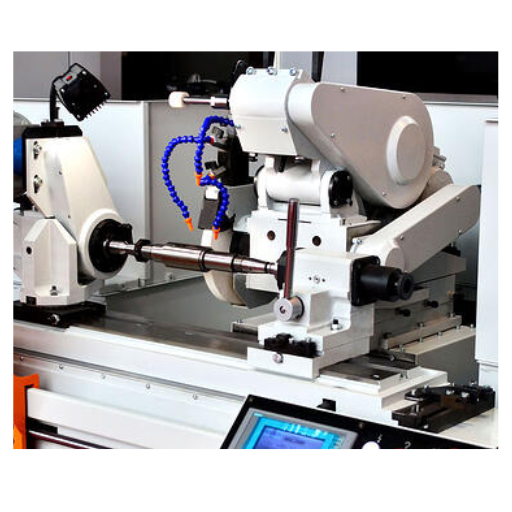
Operating and maintaining your grinding machine properly ensures efficiency, safety, and longevity. By following these guidelines, you can enhance the performance and lifespan of your grinding machine while ensuring a safe and productive working environment.
Step-by-step guide to safely operating a grinding machine
- Read and Understand the Manual: Start by reading the manufacturer’s manual. It contains critical information about specific functions, safety features, and operating procedures of the machine.
- Perform a Pre-Operation Check: Check if there are any damages or signs of wear on the grinder before turning it on. Ensure that all safety guards are installed and working properly.
- Ensure Proper Setup: Firmly secure the workpiece and select the right abrasive material for your task. Adjust speed setting of the machine according to material requirement.
- Wear Safety Gear: Put on personal protective equipment (PPE) such as safety glasses, gloves, and hearing protection.
- Start the Grinder: Power up the machine and let it reach its maximum operating speed before you start grinding.
- Grinding Process: Apply steady controlled pressure with which you hold onto a workpiece against a grinding wheel; never force anything into or against a wheel – work piece may kick back thereby damaging both work pieces themselves along with machines involved in operation.
- Monitor the Grinding: Continuously observe the grinding process. Look out for any signs of overheating, unusual noises, or vibrations, and pause the operation if needed to address these issues.
- Coolant Usage: Use coolant where necessary so as not to overheat them while still keeping their efficiency at peak levels
- Power Down Safely: After completing task powered off machine wait until wheel stops then take away from it.
- Clean and Maintain: Clean after use cleaning removes debris that may have accumulated around different parts inspecting checking overall condition whether some actions need be taken like greasing joints lubrication points tightening screws bolts nuts etc – these steps help ensure long life span functionality safe operation.
By following this step-by-step guide, you can ensure a safe and efficient grinding process, thereby extending the life of your grinding machine and maintaining a productive work environment.
Best practices for maintaining and prolonging the life of grinding machines
- Regular Inspection and Cleaning: Carry out regular inspections, as well as cleaning the equipment each time it is used in order to get rid of debris that may cause wear and tear.
- Lubrication: Ensure that all moving parts are lubricated according to the manufacturer’s instructions so as to reduce friction and prevent overheating.
- Proper Alignment: Routinely check for correct alignment of the grinding wheels along with other components thereby avoiding unnecessary strain on them which might lead to their wearing out quickly.
- Machine Calibration: Perform regular calibrations on the machines in order to attain maximum efficiency during operation as well as production of quality workpieces.
- Replace Worn Parts: Any part which has become worn-out or damaged should be replaced immediately lest it affects performance and safety aspects of the machine.
- Coolant Management: Opt for appropriate coolant types while using them properly not only to prevent heat build-up but also extend life span of grinding wheel.
- Operator Training: Train all operators how to use these machines correctly plus safety measures thus reducing misuse cases coupled with accidents happening within your organization.
- Environmental Controls: Maintain a clean controlled environment around where grinding takes place so that dust particles do not settle down on various sections hence interfering with its functionality.
- Proper Storage: When this machine is not being used store it in a dry place which is also clean otherwise rust will form leading to other damages being caused by moisture within air.
- Follow Manufacturer Guidelines: Stick strictly onto what manufacturers recommend about maintenance schedules if you want them (machines) last long enough besides functioning optimally throughout their useful service life.
By following these tips, one can effectively maintain their grinder thereby making it more durable while increasing efficiency in its operations thus minimizing breakdowns or expensive repairs.
Troubleshooting common issues faced while using grinding machines
Grinding machines, like any other machines, are expected to work efficiently despite having a few problems now and then. Here are several common grinding machine problems and their solutions:
- Machine Vibration:
- Cause: Unbalanced grinding wheel, loose components, or poor machine installation.
- Solution: Balance the grinding wheel, tighten loose parts, and ensure the machine is installed on a stable surface.
- Poor Surface Finish:
- Cause: Dull or unbalanced grinding wheel, incorrect wheel type or speed, insufficient coolant.
- Solution: Dress or replace the grinding wheel, choose the appropriate wheel type and speed, and ensure sufficient coolant flow.
- Grinding Wheel Glazing:
- Cause: Grinding wheel becoming clogged with materials.
- Solution: Dress the wheel to expose fresh abrasives and adjust the feed rate.
- Burning of Workpiece:
- Cause: Excessive heat due to high feed rate, incorrect wheel speed, or inadequate coolant.
- Solution: Reduce feed rate, adjust wheel speed, and ensure proper coolant supply.
- Grinding Wheel Wear:
- Cause: Use of inappropriate grinding wheel for the task or incorrect installation.
- Solution: Select the correct grinding wheel for the material and ensure it’s properly mounted.
- Excessive Noise:
- Cause: Loose parts, unbalanced grinding wheel, or inadequate lubrication.
- Solution: Check for and tighten loose components, balance the wheel, and lubricate moving parts.
- Chattering Marks:
- Cause: Vibration or oscillation of the grinding wheel or workpiece.
- Solution: Reduce speed, secure the workpiece, and ensure the grinding wheel is balanced.
- Machine Overheating:
- Cause: Inadequate lubrication, insufficient coolant, or prolonged continuous operation.
- Solution: Lubricate properly, increase coolant flow, and allow the machine to cool during extended use.
- Wheel Bouncing:
- Cause: Uneven wheel wear or improperly dressed grinding wheel.
- Solution: Dress the wheel uniformly and replace if necessary.
Once you are able to find workarounds for these problems, your grinding machine will keep on performing smoothly thereby ensuring high production quality. For most of these problems, preventive maintenance measures could have been implemented as stipulated in the user manual provided at the time of purchase.
Advancements in Grinding Technology
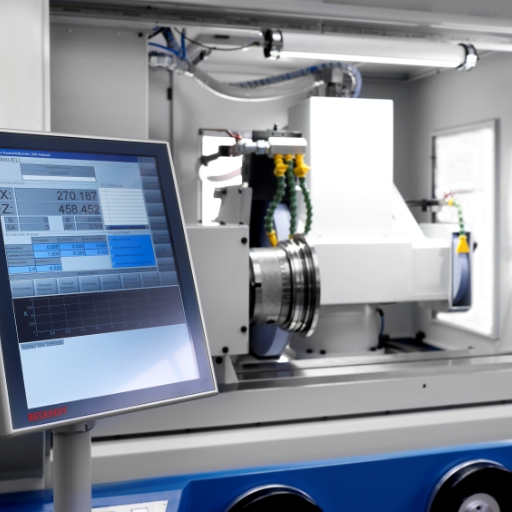
New technologies have been introduced into the field of grinding in recent times. These developments have made industrial application more efficient, precise and versatile than ever before. For example, now a days we use new materials like Cubic Boron Nitride (CBN) or diamond for making advanced grinding wheels that are harder and last longer compared to traditional abrasive materials.
Also computer numerical control systems were upgraded along with its software which allowed them to be able to perform more complex geometry functions at higher accuracy levels during automation processes achieved through revolutionizing precision aspects related to CNC.
Another important development is adaptive controls system integration where they monitor various parameters while grinding takes place with an aim optimising performance as well preventing defects from occurring by changing these settings on real time basis. Additionally high speed cutting methods were adopted too which helped increase productivity rates through faster removal rates without compromising surface finish quality levels achieved so far.
Again it should be also noted about coolants adoption which has contributed greatly towards reducing wearing out effects both on workpieces as well as grinding wheels thus extending their life spans even further than before while being environment friendly at the same time. The latest sensor technologies advancement in this area ensures that there is better process stability alongside improved quality control measures put in place during monitoring stages thereby ensuring only top notch products get manufactured each time around.
In conclusion all these technological breakthroughs have made grinders more sustainable than before thus meeting current demand patterns within manufacturing sector that calls for efficiency coupled with maximum accuracy attainment levels throughout production lines today.
The evolution of CNC grinding machines
The improvement of CNC grinding machines is impressive because they need more accurate and efficient manufacturing processes. Grinding operations were initially manual, which meant that their accuracy and efficiency were limited. This became different when computer numerical control (CNC) technology was invented since it enabled grinding machines to perform complex tasks without much human intervention.
Modern CNC grinding machines have sophisticated software that provides exact control over many parameters like feed rate, speed or spindle position among others. More so, these devices are now equipped with high-resolution sensors as well as real-time monitoring systems which make them even more accurate and reliable. With continuous development in this area alone has greatly improved industrial capabilities thereby enabling mass production of components having high levels of precision throughout the process consistently being done.
How automation is changing the grinding landscape
By upgrading efficiency, accuracy and uniformity in manufacturing processes, automation is changing the face of grinding forever. It is clear from looking through the top sources that automated grinding systems can reduce the need for manual intervention thereby reducing human error and increasing production speeds. This may be achieved by advanced robotic arms and automated feeding systems which can handle workpieces with high precision to achieve consistent quality throughout large production runs.
Additionally, real-time monitoring and adjustments are made possible through automation hence improving process control while also minimizing downtime. In conclusion, integrating automation into grinding procedures allows manufacturers to satisfy strict requirements set by contemporary industries as well as save on resources and reduce operational costs.
Future trends: Where is grinding technology heading?
To begin, the integration of CNC grinding with artificial intelligence (AI) and machine learning is expected to transform accuracy and effectiveness. AI-based analysis of data can anticipate maintenance requirements as well as optimize grinding parameters and recommend process upgrades in real time. Furthermore, industries are increasingly required to adopt greener technology which includes eco-friendly coolants together with energy-saving motors among others for sustainability purposes.
Additive manufacturing has also started supporting conventional methods of grinding by allowing for the creation of intricate shapes that were formerly unachievable. Lastly, industry 4.0 pushes for smart factories where each stage in grinding is improved through connected devices alongside data analytics capabilities. Such advancements collectively assure a brighter future that combines cleverness, environmental friendliness and automation within cutting edge production lines of tomorrow’s grinders.
Reference sources
- Source: Wikipedia – Grinding Machine
- Summary: This source provides a comprehensive overview of grinding machines, detailing their components, working principles, and various types. It covers the significance of grinding machines in manufacturing processes and their applications across different industries.
- Source: Phillips Corporation – Types & How Grinding Machines Work
- Summary: The Phillips Corporation’s article delves into the types of grinding machines and explains how they operate to achieve precise finishes on metal surfaces. It discusses the key functions of grinding machines and their role in enhancing the quality of machined products.
- Source: Xometry – 19 Types of Grinding Machines and Their Uses
- Summary: Xometry’s resource outlines 19 different types of grinding machines, ranging from portable units to specialized precision equipment. It highlights the diverse applications, costs, and power ratings associated with each type, providing insights into the versatility of grinding machines in various machining tasks.
Frequently Asked Questions (FAQs)
Q: What are the main types of large grinding machines used in manufacturing?
A: The main types of grinding machines used in manufacturing include surface grinding machines, universal grinding machines, centerless grinding machines, tool and cutter grinding machines, and precision grinding machines. These machines vary in their capabilities and are chosen based on the specific grinding work required.
Q: How does a centerless grinding machine differ from other types of grinding machines?
A: A centerless grinding machine differs from other types of grinding machines primarily in the way that it does not require the workpiece to be fixed or mounted at its ends. Instead, it is supported between two grinding wheels, a regulating wheel, and a work rest blade, allowing for high-precision grinding and the ability to achieve accuracy in dimensions in grinding without needing center holes or fixtures.
Q: Can grinding machines handle both large and small components?
A: Yes, grinding machines are versatile tools that can handle both large and small components, thanks to the range of grinding machines available. Each type of machine, from power-driven universal grinding machines to high-precision grinding tools, is designed to cater to a wide range of sizes and specifications, ensuring precise accuracy in dimensions for all kinds of workpieces.
Q: What is the significance of the grinding head in a grinding machine?
A: The grinding head is a critical component of a grinding machine as it houses the grinding tools and determines the quality of the finish and the precision of the work. It can be adjusted in various orientations to enable different types of grinding operations, such as surface or universal grinding, and can hold grinding wheels of different materials and sizes for versatile machining options.
Q: How does surface grinding differ from other grinding processes?
A: Surface grinding is used to finish flat surfaces by removing the outer layer of material. It differs from other grinding processes like centerless or universal grinding, which can be used for cylindrical or complex shapes. Surface grinding machines use a horizontally mounted grinding wheel and can achieve high accuracy and smooth finishes by moving the workpiece or the grinding head in precise increments.
Q: What factors influence the choice of grinding machine for a particular task?
A: The choice of grinding machine for a particular task is influenced by several factors, including the size and shape of the workpiece, the material to be worked on, the specific type of grinding required (e.g., surface, centerless, universal), the level of precision needed, and the production volume. Each type of machine offers different features that make it suitable for a range of grinding applications.
Q: How are grinding machines adapted for high-precision grinding tasks?
A: Grinding machines are adapted for high-precision grinding tasks through several mechanisms. This includes the use of precision-ground grinding wheels, finely adjustable controls for the grinding head and table position, a rigid machine design that minimizes vibrations, and advanced cooling systems to prevent thermal deformation. Precision grinding machines also feature sophisticated measuring tools for constant monitoring of workpiece dimensions.
Q: Are there any innovations in grinding technology that have improved the performance of grinding machines?
A: Yes, innovations in grinding technology, such as improved abrasive materials for grinding wheels, CNC technology for more precise control over the grinding process, and advanced sensor and measuring systems for real-time feedback, have significantly improved the performance of grinding machines. These advancements allow for more efficient material removal, higher accuracy in dimensions, and the ability to grind a wider range of materials with consistency and precision.








